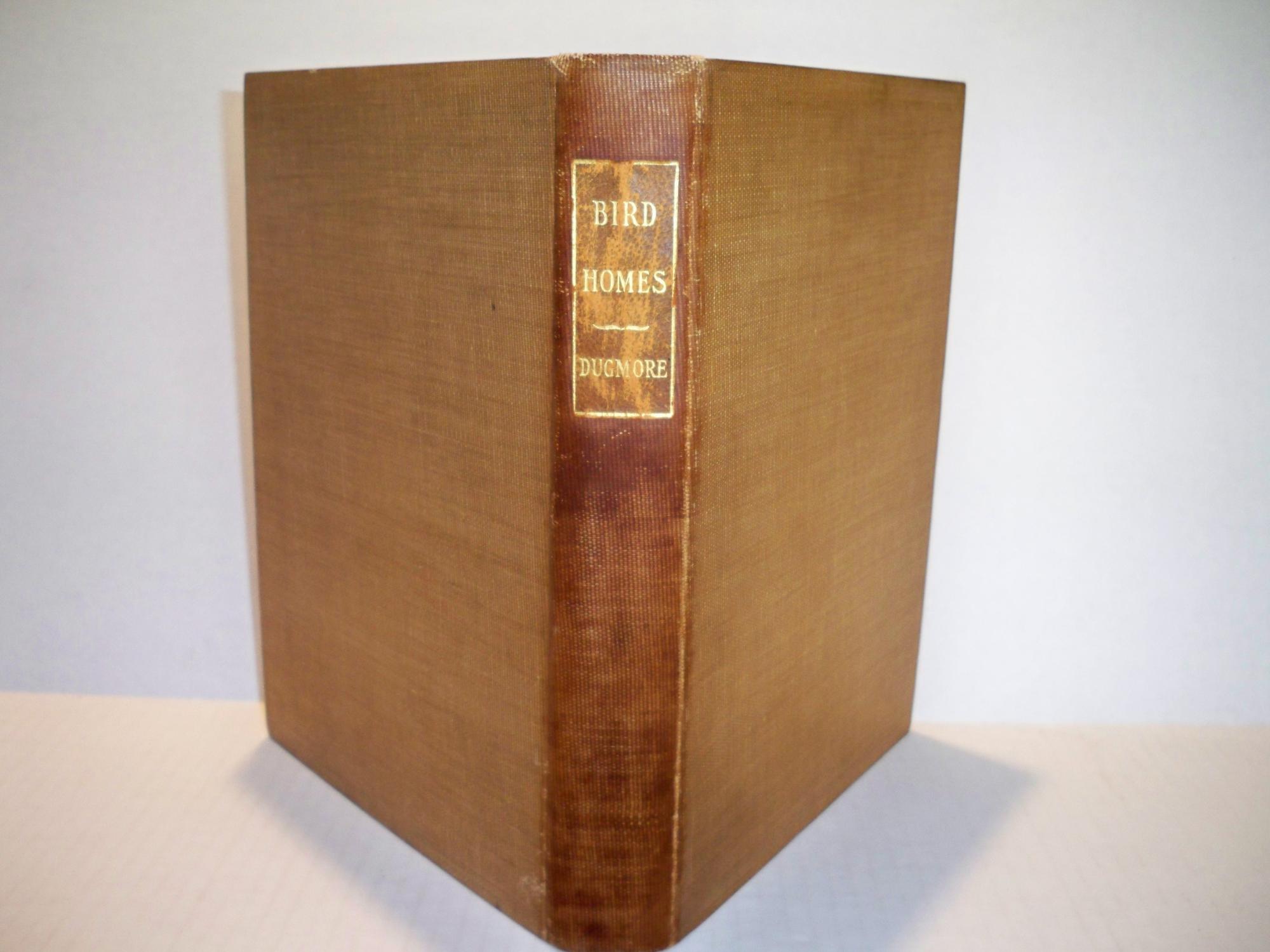日志
鸟巢
热度 11 ||
2013-8-15
翻出一本旧书, 是1900年版的二十世纪早期野生动物摄影家Arthur Radclyffe Dugmore (1870-1955)撰写的鸟类学术专著《鸟巢》(Bird Homes - The nests, eggs and breeding habits of the land birds breeding in the eastern United States; with hints on the rearing and photographing of young birds):


1930年出版的美国传记作家Thomas Lowell 写的《ROLLING STONE: The Life and Adventures of A. Radclyffe Dugmore》中,专门介绍了该书作者的人生传奇: 书中说他是一位作家、猎人、探险家、大学讲师、士兵、和艺术家。他说话时有一句口头禅,就是“噢,我说呀”。 他1870年出生于战乱中的爱尔兰,因为父亲在部队服役,所以居无定所,经常搬迁,并学会了射击,可以百步穿杨。1883年在爱尔兰反叛的战事之后,他全家离开都柏林经地中海到非洲的阿尔及利亚去猎狮子。后来经过在土耳其和俄罗斯的一段短暂的流浪生活,他陪母亲一起回英国做鼻腔手术。

In 1887, Dugmore decided to become a painter. In January 1889,
they headed for Florida. He got malaria in Honduras. After quarreling
with his father, he left him. With his interest in camera, sketching
and painting, Dugmore opened a small photographic studio. He moved to New
York. In 1892, he got engaged to Miss Henriette Watkins. His father
died in East Africa. After marriage, a daughter was born and then a son was born. His brother William invited him to British East Africa. After
the birth of 3rd child, Dugmore set out in 1908, to photograph wild
animals in East Africa. From Mombasa, he took Uganda Railways to
Nairobi. From Kiu, they moved to Athi Plains and Ol Donyo Sabuk, with
good view of Mt Kilimanjaro. Then off to Yatta Plains, Thika and Tana
Rivers area. LIONS MOVE STEALTHY, THEY COME AND GO LIKE GHOSTS. After
visiting Mt Kenya, Meru, Guaso Nyiro, Nyeri, doing 1500 miles in 4
months, they were back in Nairobi.

Then in 1914, he settled in Surrey, England at the age of 43. Then England went to War, and Dugmore joins King's Own Yorkshire Light Infantry and went to battle at Somme. After gassed with Phosgene Gas and wounded, he was sent home. He got an opportunity to make a film in East Africa. He got bad malaria at Ngora Ngora (Ngorongoro) and filmed lions at Amara River (Mara). A year later he went back to Kenya, this time to Meru, Embu, Guaso Nyiro, Lasamis, Mt Marsabit (Paradise Lake), Nanyuki, Tana River, Nairobi and back to England. His films were very successful. His last visit was to film elephants in Sudan.
Dugmore traveled to Kenya on photo-safari in 1909-1910, and twice to Newfoundland, in 1907 and 1913. The artist wrote and illustrated works including The Vast Sudan, 1924; Camera Adventures in the African Wilds, 1913; The Romance of the Newfoundland Caribou, 1913; and In the Heart of the Northern Forests, published in 1930. He was a pioneering American wildlife photographer, painter, and printmaker who turned from hunting to capturing his subjects on paper and canvas.
翻出一本旧书, 是1900年版的二十世纪早期野生动物摄影家Arthur Radclyffe Dugmore (1870-1955)撰写的鸟类学术专著《鸟巢》(Bird Homes - The nests, eggs and breeding habits of the land birds breeding in the eastern United States; with hints on the rearing and photographing of young birds):

1930年出版的美国传记作家Thomas Lowell 写的《ROLLING STONE: The Life and Adventures of A. Radclyffe Dugmore》中,专门介绍了该书作者的人生传奇: 书中说他是一位作家、猎人、探险家、大学讲师、士兵、和艺术家。他说话时有一句口头禅,就是“噢,我说呀”。 他1870年出生于战乱中的爱尔兰,因为父亲在部队服役,所以居无定所,经常搬迁,并学会了射击,可以百步穿杨。1883年在爱尔兰反叛的战事之后,他全家离开都柏林经地中海到非洲的阿尔及利亚去猎狮子。后来经过在土耳其和俄罗斯的一段短暂的流浪生活,他陪母亲一起回英国做鼻腔手术。


Then in 1914, he settled in Surrey, England at the age of 43. Then England went to War, and Dugmore joins King's Own Yorkshire Light Infantry and went to battle at Somme. After gassed with Phosgene Gas and wounded, he was sent home. He got an opportunity to make a film in East Africa. He got bad malaria at Ngora Ngora (Ngorongoro) and filmed lions at Amara River (Mara). A year later he went back to Kenya, this time to Meru, Embu, Guaso Nyiro, Lasamis, Mt Marsabit (Paradise Lake), Nanyuki, Tana River, Nairobi and back to England. His films were very successful. His last visit was to film elephants in Sudan.
Dugmore traveled to Kenya on photo-safari in 1909-1910, and twice to Newfoundland, in 1907 and 1913. The artist wrote and illustrated works including The Vast Sudan, 1924; Camera Adventures in the African Wilds, 1913; The Romance of the Newfoundland Caribou, 1913; and In the Heart of the Northern Forests, published in 1930. He was a pioneering American wildlife photographer, painter, and printmaker who turned from hunting to capturing his subjects on paper and canvas.
全部作者的其他最新日志
- • 西方爱情诗选 之 我思故我爱
- • 从文自传 之 湘西儒将
- • 千年世家 之 神仙打架
- • 从文自传 之 杀人
- • 灯下漫笔 之 河南匪气
- • 租界里的杂文 之 募捐










